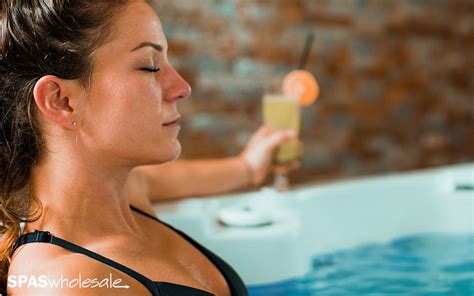Hot Tubs and Skin Health: Finding Your Optimal Soaking Time
Hot tubs offer relaxation and potential health benefits, but excessive soaking can harm your skin. Finding the sweet spot—the optimal soaking time—is key to enjoying the benefits without the drawbacks. This article explores the relationship between hot tub use and skin health, helping you determine the ideal soaking duration for your skin type and needs.
How Do Hot Tubs Affect Skin?
Hot tubs, with their warm, often chemically treated water, can impact your skin in several ways:
-
Hydration: The warm water softens and hydrates the skin, potentially improving its elasticity and reducing dryness. However, prolonged exposure can lead to overhydration, causing the skin to become wrinkled and prune-like.
-
Circulation: The heat increases blood flow, potentially improving skin tone and complexion. But excessive heat can damage capillaries, leading to redness and irritation.
-
Exfoliation: The water's gentle action can help remove dead skin cells, promoting cell turnover. However, harsh chemicals or overly long soaks can strip the skin of its natural oils, leading to dryness and irritation.
-
Chemical Exposure: Hot tubs often contain chlorine or bromine to sanitize the water. While these chemicals kill bacteria, prolonged exposure can irritate sensitive skin, causing dryness, itching, or even allergic reactions.
What is the Optimal Soaking Time in a Hot Tub?
There's no one-size-fits-all answer to this question. The ideal soaking time depends on several factors, including your skin type, the temperature of the water, and the chemicals used. However, most dermatologists recommend limiting hot tub soaks to 15-20 minutes. Exceeding this time can negate the benefits and lead to skin problems.
People Also Ask: What happens if I stay in a hot tub for too long?
Staying in a hot tub for too long can lead to several issues, including:
- Dehydration: The heat causes your body to sweat, leading to fluid loss. This dehydration can manifest as dry, itchy skin.
- Skin Irritation: Prolonged exposure to hot water and chemicals can irritate and dry out your skin, leading to redness, itching, and even rashes.
- Increased Risk of Infection: While hot tubs are sanitized, prolonged exposure increases the chance of skin infections if proper hygiene isn't maintained.
- Fainting or Dizziness: The heat can cause blood vessels to dilate, leading to a drop in blood pressure which can cause dizziness or fainting.
People Also Ask: Can hot tubs make your skin dry?
Yes, hot tubs can make your skin dry if you spend too much time in them. The hot water, combined with the chemicals used to sanitize the water, can strip away your skin's natural oils, leading to dryness, itching, and irritation. This is especially true if the water is too hot or if you soak for extended periods.
People Also Ask: How often should I use a hot tub for skin benefits?
While hot tubs can offer some skin benefits, using them too frequently can negate those benefits and lead to skin problems. Aim for no more than 2-3 times per week, and always follow the recommended soaking time.
People Also Ask: Are hot tubs bad for sensitive skin?
Hot tubs can be particularly harsh on sensitive skin. The chemicals used to sanitize the water, along with the heat and prolonged exposure, can exacerbate existing conditions like eczema or psoriasis. Individuals with sensitive skin should limit their soaking time to even less than the recommended 15-20 minutes, perhaps just 10-15 minutes, and ensure the water is not too hot. They may also consider using hypoallergenic skincare products afterward to soothe and rehydrate their skin.
Tips for Healthy Hot Tubbing
-
Keep the water temperature moderate: Avoid excessively hot water, aiming for a temperature between 100-104°F (38-40°C).
-
Limit your soaking time: Adhere to the recommended 15-20 minute limit.
-
Hydrate: Drink plenty of water before, during, and after your soak to prevent dehydration.
-
Moisturize: Apply a moisturizer after your soak to replenish lost moisture.
-
Cleanse your skin: Gently cleanse your skin after your soak to remove any lingering chemicals.
-
Listen to your body: If you experience any discomfort, get out of the hot tub immediately.
By following these guidelines, you can enjoy the relaxing and potential health benefits of hot tubs without compromising the health of your skin. Remember, moderation is key. A short, enjoyable soak is far better than a long, potentially damaging one.

